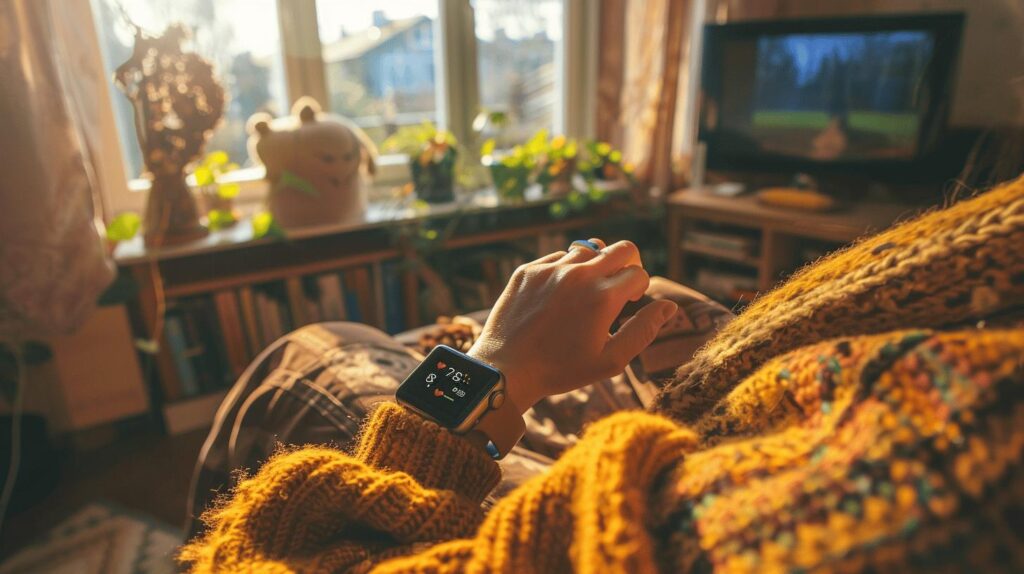Are you aware that the devices we wear every day can do more than just keep us connected? They can significantly enhance our wellness. In an era where technology is inescapable, it's fascinating to see how innovations like fitness tracking devices and mental health apps are transforming our lives for the better. This article explores how the development of technology boosts our wellness physically, mentally, and beyond. Whether it's personalized health recommendations or convenient remote consultations, the benefits are compelling and worth understanding. Discover how these advancements can lead you to a healthier, happier life.
Enhancing Physical Health with Fitness Tracking Devices
Fitness tracking devices have revolutionized how we monitor our health. These devices, such as smartwatches and fitness bands, track vital signs, activity levels, and sleep patterns. They offer real-time feedback and personalized recommendations, enabling users to make informed decisions about their fitness routines. By providing data on steps taken, calories burned, and heart rate, these devices empower users to take charge of their physical wellness.
The impact of fitness tracking devices on personal health is profound. They encourage healthier lifestyles by setting goals and offering motivation through progress tracking. Users can see tangible results from their efforts, which can be a powerful motivator. Additionally, these devices help identify patterns and trends in physical activity, making it easier to adjust routines for optimal health. Wearable technology also aids gym owners in monitoring clients' progress, ensuring personalized and effective fitness plans.
| Device Type | Key Features |
|---|---|
| Smartwatch | Heart rate monitoring, GPS tracking, sleep analysis, activity tracking |
| Fitness Band | Step counting, calorie tracking, sleep monitoring |
| Chest Strap | Accurate heart rate monitoring, compatibility with fitness apps |
| Smart Clothing | Embedded sensors, real-time biometric feedback |
The future potential of wearable fitness technology is vast. As technology advances, these devices will offer even more detailed health insights and personalized recommendations. Innovations like smart clothing with embedded sensors will provide real-time biometric feedback, further enhancing our ability to monitor and improve physical health. This continuous evolution promises to make fitness tracking devices even more integral to our wellness routines.
Mental Health Improvements Through Technology

The rise of mental health apps has revolutionized how individuals manage their well-being. These apps provide accessible therapy, meditation, and stress management tools, making mental health support more available than ever before. With a few taps on a smartphone, users can engage in guided meditations, track their mood, and access self-help resources. The convenience of mental health apps ensures that individuals can prioritize their well-being anytime and anywhere.
One significant benefit of mental health apps is the anonymity and flexibility they offer. Users can explore therapeutic techniques without the fear of stigma or the hassle of scheduling appointments. This flexibility is especially beneficial for those with busy lifestyles or for individuals who feel uncomfortable seeking help in traditional settings. By providing a private and secure platform, mental health apps encourage more people to take proactive steps toward mental wellness.
- Headspace: Offers guided meditations and mindfulness exercises.
- Calm: Provides sleep stories, breathing programs, and relaxing music.
- BetterHelp: Connects users with licensed therapists for online counseling.
- Moodfit: Allows users to track their mood, set goals, and access CBT tools.
- Sanvello: Combines mood tracking, guided journeys, and self-care tools.
Digital therapeutics are transforming mental health care by introducing innovative approaches like Cognitive Behavioral Therapy (CBT) via apps. These digital solutions offer structured programs that guide users through evidence-based techniques to manage anxiety, depression, and other conditions. As technology continues to evolve, digital therapeutics hold the potential to make mental health care more personalized and effective, reaching individuals who may not have access to traditional treatment methods.
Telemedicine and Its Advantages
Telemedicine has significantly expanded access to healthcare by enabling remote consultations and medical advice. This technology reduces the need for physical visits, making it easier for patients to receive care from the comfort of their homes. By leveraging telehealth, individuals in remote or underserved areas can connect with healthcare professionals without the constraints of travel, thus bridging the gap in healthcare access.
The convenience and cost savings associated with telemedicine are substantial. Patients no longer need to spend time and money traveling to healthcare facilities, which can be particularly beneficial for those with mobility issues or busy schedules. Telemedicine also reduces healthcare costs by decreasing the need for in-person visits and hospital admissions. The ability to monitor and manage health conditions remotely allows for more efficient use of healthcare resources, ultimately lowering overall healthcare expenses.
- Increased access to specialists
- Reduced travel time and costs
- Convenience of remote consultations
- Lower healthcare costs
- Continuous health monitoring
- Improved management of chronic conditions
Telemedicine has had a profound impact on rural and underserved communities. These areas often lack adequate healthcare facilities and specialists, making it difficult for residents to receive the care they need. Telemedicine addresses this issue by providing remote diagnosis and treatment options, ensuring that even those in isolated locations can access high-quality medical care. This digital transformation of healthcare is a crucial step toward achieving more equitable health outcomes for all.
The Role of Wellness Education Through Technology

Technology has significantly enhanced the accessibility of wellness education. Online platforms and apps now offer a wealth of information on nutrition, exercise, and healthy living. These resources are available anytime and anywhere, making it easier for individuals to learn about maintaining a healthy lifestyle. The convenience of accessing educational materials on smartphones and computers means that wellness education can fit into even the busiest schedules.
Online wellness education platforms provide a wide range of interactive and engaging content. From video tutorials and webinars to quizzes and personalized health plans, these platforms make learning about health and wellness more appealing and effective. Users can find tailored advice on various topics, such as meal planning, workout routines, and stress management techniques. This variety ensures that individuals can find the specific information they need to improve their well-being.
- MyFitnessPal: Offers calorie counting, nutrition tracking, and meal planning tools.
- Coursera: Provides courses on health, nutrition, and wellness from leading universities.
- Fitness Blender: Features workout videos and fitness plans for all levels.
- Headspace: Offers mindfulness and meditation exercises to improve mental health.
- Khan Academy Health & Medicine: Provides educational videos on various health topics.
The impact of these platforms on public health literacy is profound. By providing accessible and reliable information, they empower individuals to make informed decisions about their health. Improved health literacy leads to better lifestyle choices, which can reduce the risk of chronic diseases and improve overall well-being. As more people turn to these e-health platforms, the collective knowledge about health and wellness grows, fostering a healthier society.
Social Media and Online Communities for Health Awareness
The rise of health communities on social media platforms like Instagram and Facebook has transformed how people engage with wellness. These platforms have become hubs where users share their health journeys, tips, and encouragement. By posting updates, sharing personal stories, and participating in group challenges, individuals find motivation and support from like-minded people. The accessibility and reach of social media make it an effective tool for promoting health awareness.
These online health communities provide various types of support and information. Members can ask questions, share experiences, and receive advice on topics like fitness, nutrition, and mental well-being. Specialized apps and forums also create spaces for sharing knowledge and offering emotional support. For instance, the Centered AF Woman's Facebook Group focuses on wellness, self-acceptance, and natural health, providing a supportive environment for its members.
- MyFitnessPal Community: Focuses on fitness tracking, nutrition advice, and weight loss support.
- Fitbit Community: Offers activity tracking, wellness challenges, and health tips.
- Headspace Community: Centers on mindfulness, meditation practices, and mental health support.
- Centered AF Woman’s Facebook Group: Emphasizes wellness, self-acceptance, and natural health.
The impact of these communities on individual wellness is significant. By providing a platform for connection and shared experiences, they help individuals stay motivated and informed. The support and accountability found in these groups can lead to healthier lifestyle choices and improved mental well-being. As more people join these digital fitness communities, the collective effort contributes to greater health awareness and a culture of wellness.
Final Words
In the action, fitness tracking devices have revolutionized physical health by providing real-time health insights and personalized feedback. Mental health apps offer accessible and flexible support, changing the landscape of mental wellness care. Telemedicine has expanded healthcare access and reduced costs, significantly benefiting rural areas. Technology-based wellness education platforms have made health learning engaging and accessible. Lastly, social media and online communities have fostered collective health awareness and support.
Overall, how has the development of technology positively affected our wellness? It has made us more connected, informed, and proactive about our health, promoting an overall healthier lifestyle.
FAQ
How can you increase your awareness of hereditary diseases?
Increasing awareness involves knowing family medical history, undergoing genetic screening, and consulting healthcare professionals about potential risks and preventive measures.
Premature death can occur if the dimensions of health are underdeveloped.
Yes, neglecting aspects like physical, mental, and social health can lead to premature death due to diseases or poor lifestyle choices.
The dimensions of health operate independently; they don't affect one another.
This is incorrect. The dimensions of health are interconnected, affecting and influencing each other.
Which of these choices is not a cultural influence on our wellness?
To identify non-cultural influences, consider factors like biology or environment, which are not shaped by cultural norms.
How has the development of technology positively affected our wellness brain?
Technology has improved wellness through apps and devices that offer personalized health monitoring, fitness tracking, and mental health support.
Which of the following does not contribute to wellness?
To identify factors not contributing to wellness, consider elements like unhealthy habits, poor diet, and lack of physical activity.
Wellness is achieved when someone is at their best in all 6 dimensions of health.
Yes, achieving wellness involves being at your best in physical, emotional, intellectual, social, spiritual, and occupational health.
Which of the following phrases belong together?
Context-specific phrases or terms that relate to health and wellness should be assessed based on their meanings and connections.
How does technology affect our wellness?
Technology affects wellness by providing tools for health monitoring, offering mental health resources, and improving access to healthcare services.
Is the media's role in primarily entertainment so it has little effect on our wellness?
No, the media has a significant impact on wellness by shaping perceptions, spreading health information, and influencing behaviors.


